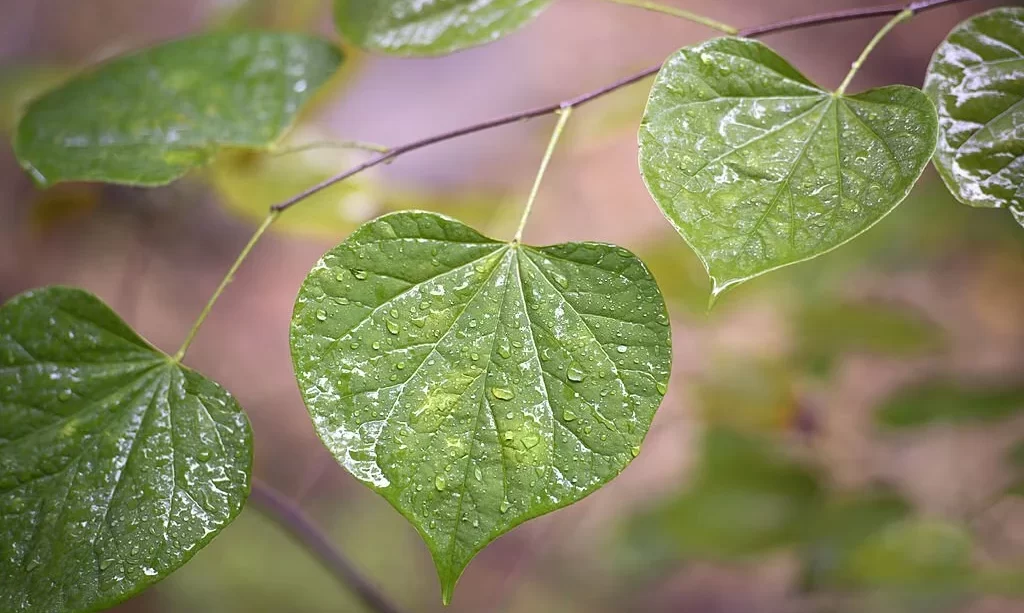In the realm of trees, nature often showcases its artistry in the most enchanting ways. One of the most romantic and visually captivating expressions of this natural artistry can be found in trees with heart-shaped leaves. These trees, graced with leaves that mimic the iconic symbol of love, have an allure that extends beyond their striking appearance. In this exploration, we will delve into the world of trees bearing heart-shaped leaves, uncovering their notable species and understanding the symbolism and beauty they bring to horticulture and landscaping. Whether you’re an ardent nature enthusiast or simply appreciate the romantic touch of the outdoors, these trees are bound to capture your heart.
- For best results, plant in USDA zone: 4-8 -Mature size: 8-10 ft H x 8-10 ft W
- Plant is delivered in a #3 size container. It is fully rooted in the soil and can be planted immediately upon arrival, weather permitting.
- This unique flowering tree blooms distinctly in the landscape in may as small, Purple-Pink Flowers burst into color along bare tree stems providing an outstanding early nectar source for Native pollinators. Outstanding yellow fall foliage color
- Easy to grow, this selection is perfect for using as a Small specimen tree in the landscape. Unique heart shaped foliage along with singular bloom and dark colored bark give this selection Year Round appeal
- Native songbirds love to feed on the seeds formed in seed Pods. This tree also provides essential cover and nesting to native birds
Notable Trees with Heart-Shaped Leaves
Among the world of trees, a select few stand out for their romantic and heartwarming foliage. The Eastern Redbud (Cercis canadensis) is a beloved native of North America and is celebrated for its heart-shaped leaves that emerge in vibrant green and turn golden in the fall. What makes the Eastern Redbud even more enchanting is its early spring display of pinkish-purple blossoms, creating a breathtaking contrast against its leaves.
Another notable contender is the Silverbell Tree (Halesia carolina), a graceful beauty that boasts heart-shaped leaves with a gentle, silvery hue. Its small, elegant white flowers, which hang in clusters, make it a favorite in spring gardens. As it matures, the Silverbell Tree forms a picturesque shape that further accentuates the romantic charm of its heart-shaped leaves.
For those seeking an even deeper connection to the theme of love, there is the Love Tree (Cercis siliquastrum), also known as the Judas Tree. With its heart-shaped leaves and vibrant pink flowers, it has become a symbol of love and passion in horticultural traditions.
These notable trees are not only eye-catching but also carry a romantic and sentimental message within their foliage. As they grace our landscapes, they add a touch of love to the world of trees and horticulture.
The Symbolism of Heart-Shaped Leaves
The heart-shaped leaves of these trees hold a unique and powerful symbolism. Hearts have long been associated with love and passion, making them the perfect emblem for these trees. When these trees blossom with heart-shaped leaves, they carry with them a sentimental message, reminding us of the love that exists in the natural world. It’s no wonder that they are often planted to celebrate love in all its forms – from the love between partners to the love within families. These trees symbolize not just the beauty of nature but also the enduring power of love, making them a cherished addition to gardens and landscapes that seek to express the most profound human emotions.
Landscaping and Cultivation
The heart-shaped foliage of these trees contributes to the beauty and visual appeal of gardens and landscapes. Their unique leaves create a romantic ambiance, making them popular choices for landscaping around homes, parks, and public spaces. When thoughtfully placed in gardens, they become focal points and evoke a sense of love and romance. Cultivating these trees requires attention to their specific needs, from well-draining soil to proper watering and pruning. As they grow and mature, their heart-shaped leaves become a testament to the care and dedication of gardeners and horticulturists, adding a touch of natural romance to outdoor spaces.
In conclusion, trees with heart-shaped leaves are a delightful testament to the artistry of nature and the enduring symbolism of love. Their notability extends beyond their charming foliage, as they become tangible expressions of affection and sentiment in gardens and landscapes. As they flourish and adorn our outdoor spaces, they bring an air of romance and symbolism that resonates with all who encounter them. These trees remind us that in the world of horticulture, love can be both seen and felt, offering a heartwarming connection to the natural world and the cherished spaces we call our own.




